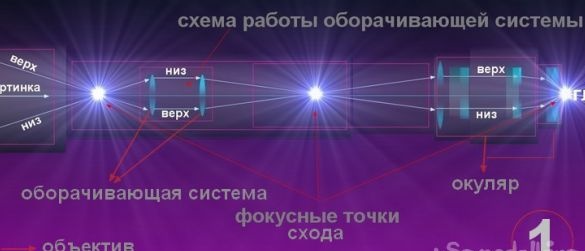So, you decided to make a spyglass and get down to business. First of all, you will learn that the simplest spyglass consists of two biconvex lenses - the lens and the eyepiece, and that the magnification of the spyglass is obtained by the formula K = F / f (the ratio of the focal lengths of the lens (F) and the eyepiece (f)).
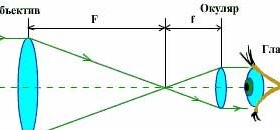
Armed with this knowledge, you go delving into boxes with different trash, in the attic, in the garage, in a barn, etc., with a clearly defined goal - to find more different lenses. It can be glasses from glasses (preferably round), watch magnifiers, lenses from old cameras, etc. Having accumulated a supply of lenses, proceed with measurements. You need to choose a lens with a focal length F larger and an eyepiece with a focal length f smaller.
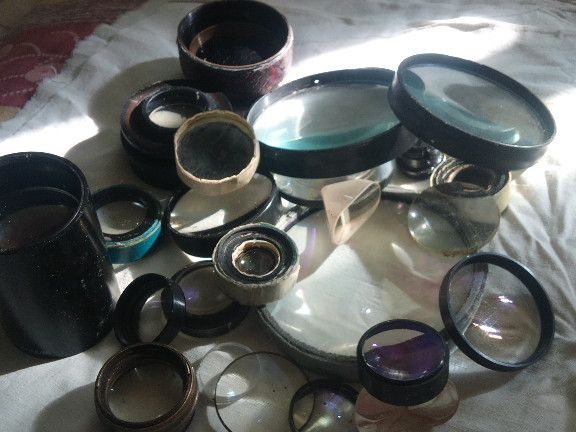
Measuring the focal length is very simple. The lens is directed to some light source (a lamp in the room, a street lamp, the sun in the sky or just a lighted window), behind the lens there is a white screen (you can have a sheet of paper, but cardboard is better) and move relative to the lens until it will not produce a sharp image of the observed light source (inverted and reduced). After that, it remains to measure the distance from the lens to the screen with a ruler. This is the focal length. Alone, you are unlikely to cope with the described measurement procedure - you will miss the third hand. Have to call for help assistant.
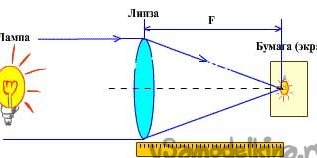
Having picked up a lens and an eyepiece, you begin to design an optical system to enlarge the image. Take the lens in one hand, the eyepiece in the other, and through both lenses examine some distant object (just not the sun - you can easily stay without an eye!). By mutual movement of the lens and the eyepiece (trying to keep their axis in line), you get a clear image.
This will result in an enlarged image, but still inverted. What you are now holding in your hands, trying to maintain the achieved mutual position of the lenses, is the desired optical system. It remains only to fix this system, for example, by placing it inside the pipe. This will be the spyglass.
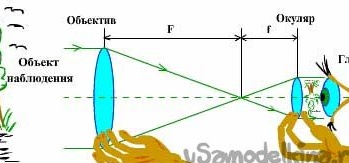
But do not rush with the assembly. Having made a spyglass, you will not be satisfied with the “upside down” image. This problem is solved simply by using a wrapping system obtained by adding one or two lenses identical to the eyepiece.
Get a wrapping system with one coaxial extra lens by placing it at a distance of about 2f from the eyepiece (the distance is determined by selection).
It is interesting to note that with this version of the wrapping system it is possible to obtain a larger magnification by smoothly moving the additional lens away from the eyepiece. However, a strong increase will not be possible if you do not have a very high-quality lens (for example, glass from glasses). The larger the diameter of the lens, the larger the resulting magnification.
This problem in "purchased" optics is solved by composing a lens of several lenses with different refractive indices. But these details do not bother you: your task is to understand the circuit diagram of the device and build the simplest operating model (without spending a dime).
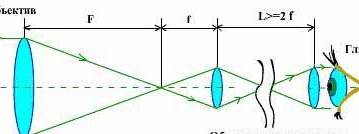
Obtain a reversing system with two coaxial additional lenses by positioning them so that the eyepiece and these two lenses are separated from each other at equal distances f.
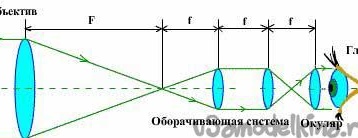
Now you imagine the scheme of a telescope and know the focal lengths of the lenses, so proceed to the assembly of the optical device.
Well suited for assembling PVC pipes of various diameters. Scraps can be dialed in any plumbing workshop. If the lenses are not suitable for the diameter of the tube (smaller), the size can be adjusted by cutting rings from the tube close to the size of the lens. The ring is cut in one place and put on the lens, Tightly fixed with tape, wrapped. The tubes themselves are similarly adjusted if the lens is larger than the diameter of the tube. In this way, you will have a telescopic telescope. It is convenient to adjust the magnification and sharpness by moving the sleeves of the device. To achieve greater magnification and image quality by moving the wrapping system, focusing by moving the eyepiece.
The manufacturing, assembly and customization process is very exciting.
Below my tube with an increase in the 80s - almost like a telescope.
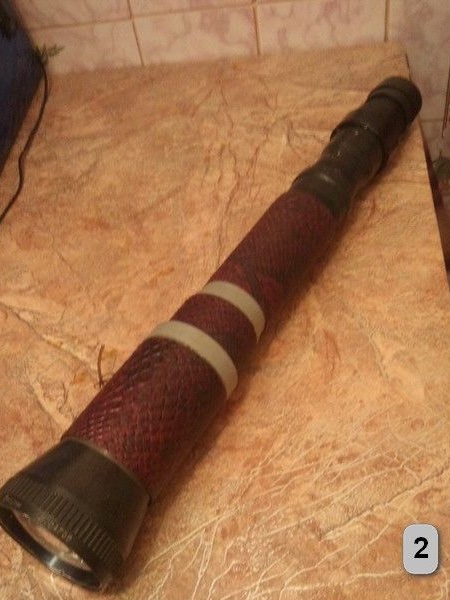
The pipe can also be turned into a telescope. To do this, you need to make a separate lens from a PVC pipe and lenses from a magnifier with a diameter of 120 mm. with a focal length of 140 mm see photo
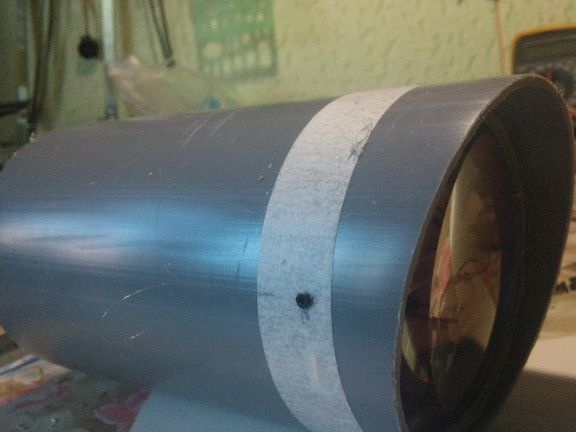
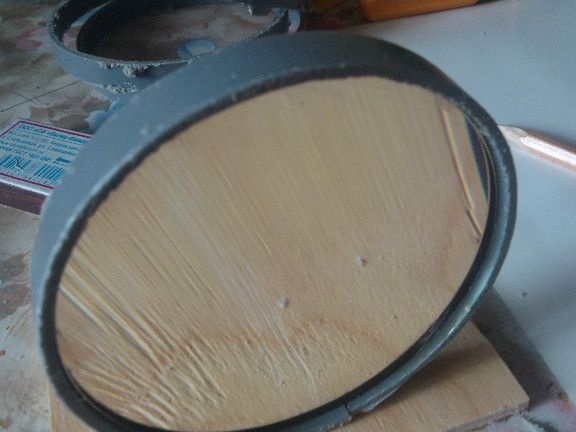
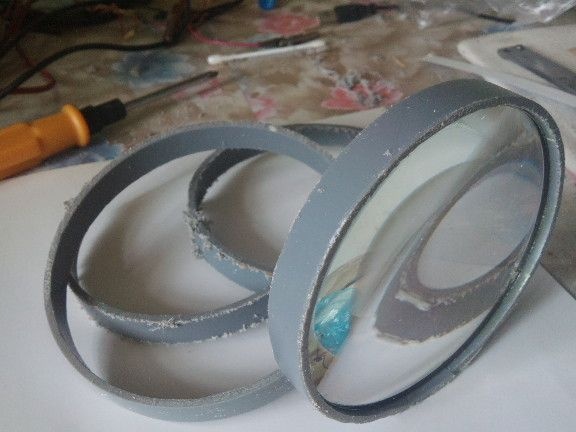
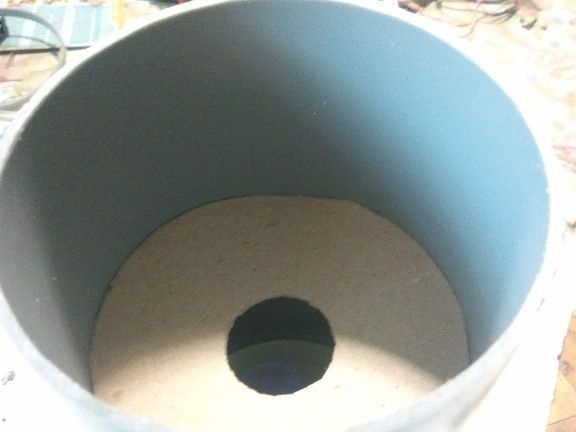
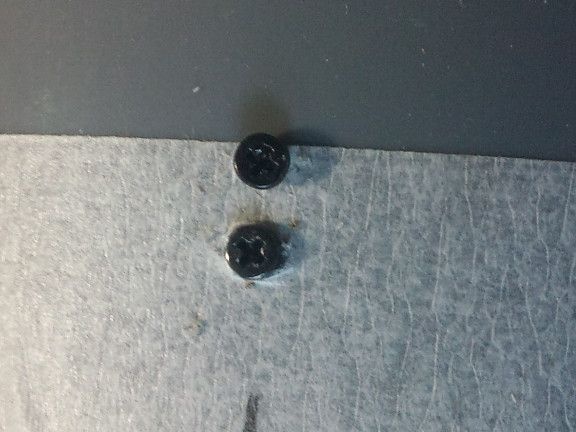
The bottom of the lens sleeve and the lens in the frame are fixed with screws, and another sleeve is also manufactured. It will be inserted into the lens and fixed with hot glue.
We remove its lens from the tube, and insert the tube itself into the telescope lens. Move, adjust the best magnification, sharpness as described above. Everything, the telescope is ready.

